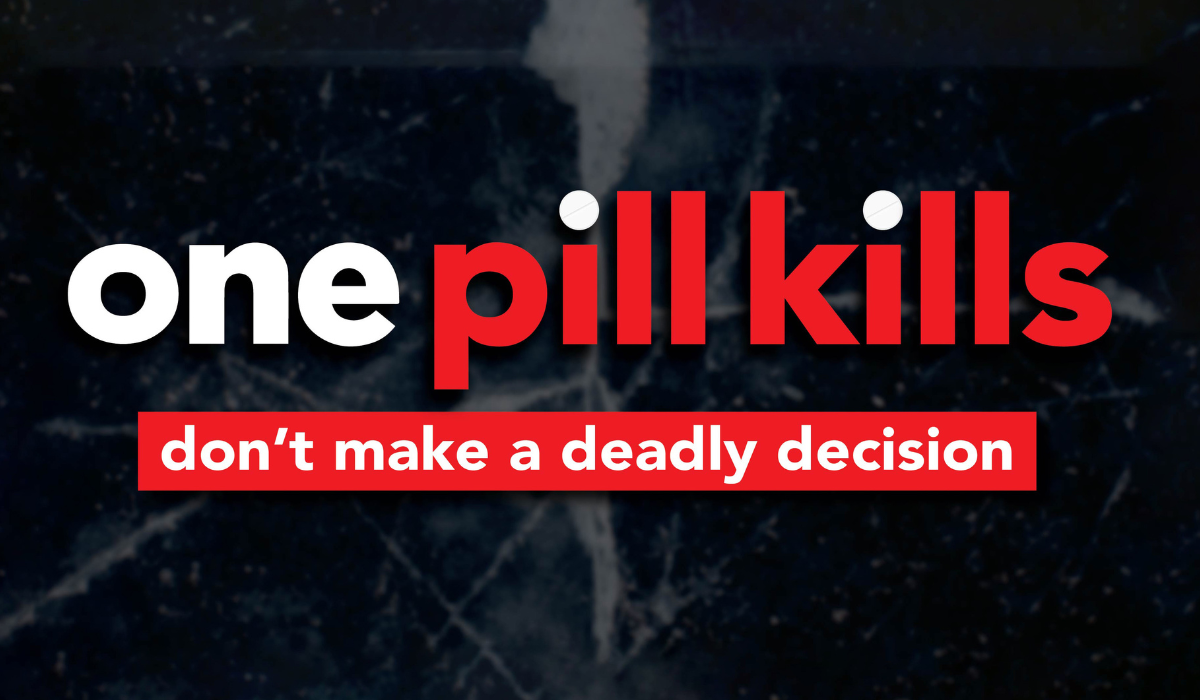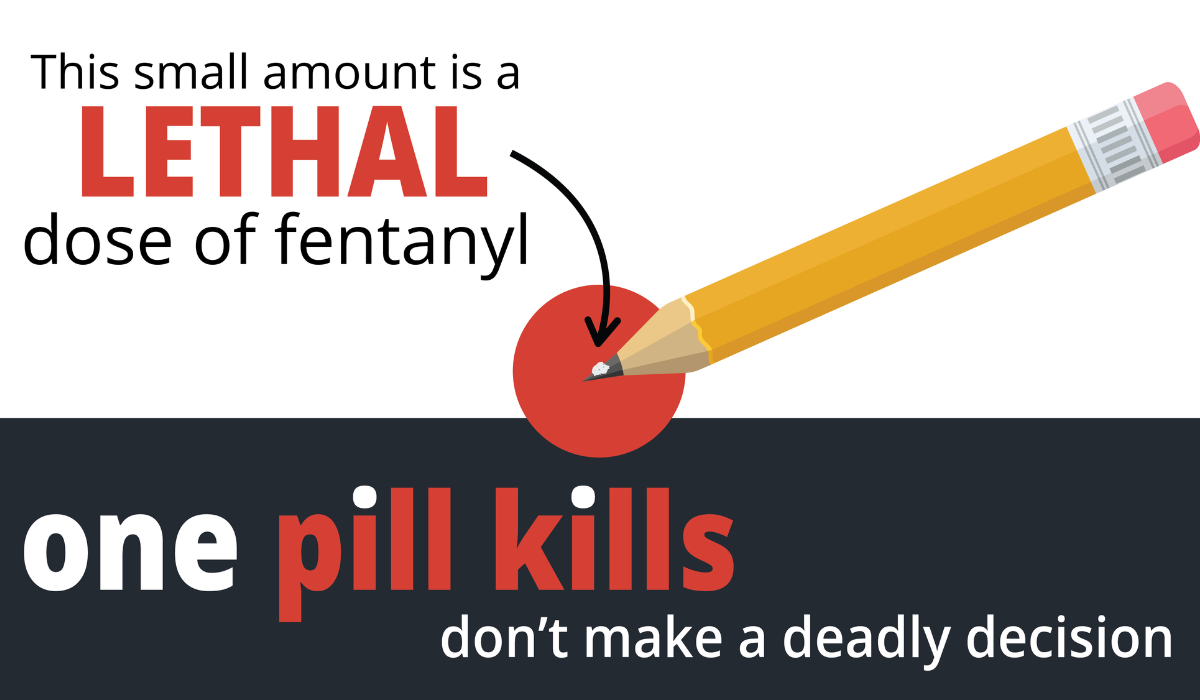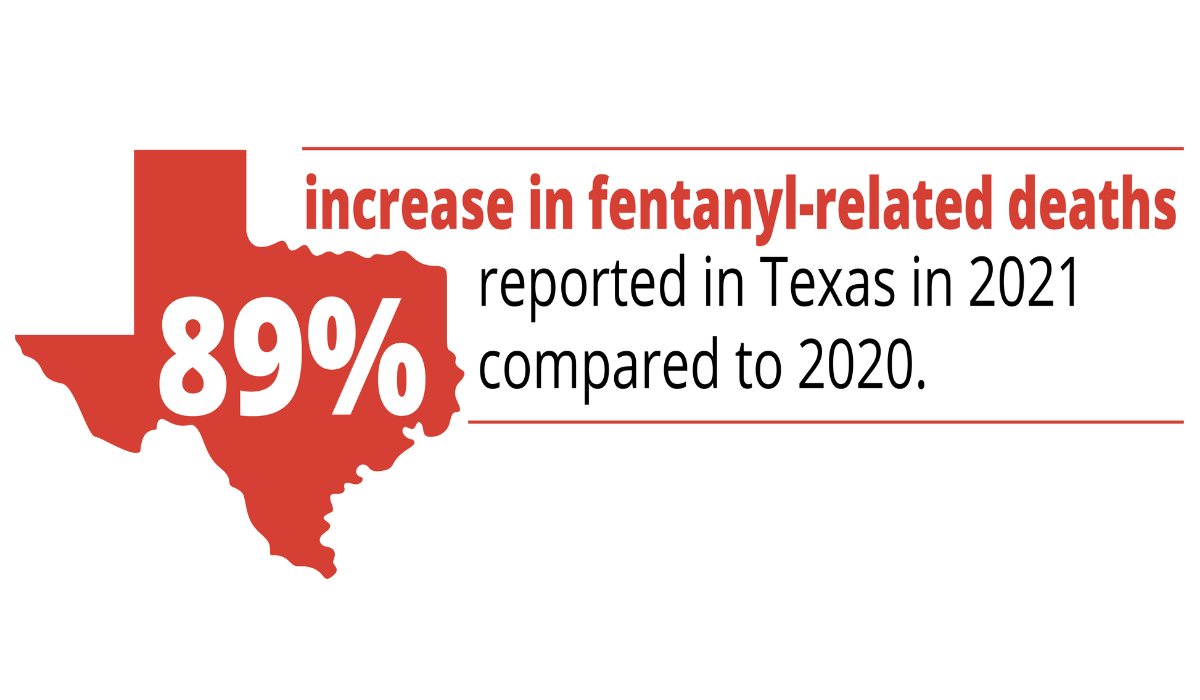Substance use expert Dr. Ty Schepis explains the risks of fentanyl
Matt Joyce | April 11, 2023

“One Pill Kills.” That’s the simple and direct message of the State of Texas’ campaign to raise awareness about the dangers of fentanyl, a synthetic opioid.
Gov. Greg Abbott launched the campaign last fall, citing statistics that show fentanyl caused 1,700 overdose deaths in Texas in 2021. The toll represented an 89% jump from the previous year. Across the country, fentanyl is the leading cause of death in Americans between ages 18 and 45.
Hospitals and medical offices use fentanyl as a surgical anesthetic and for pain treatment. But illegal drug makers have capitalized on the drug’s potency and low cost for use in narcotics including heroin and counterfeit prescription pills. Given fentanyl’s presence on the streets of Texas, the state campaign also intends to raise awareness about the availability of the medicine naloxone, including the brand NARCAN, an over-the-counter nasal spray treatment that can counter the effects of overdose in an emergency.
At TXST, the University Police Department has a supply of naloxone available to use in case of a suspected drug overdose. TXST officers at both San Marcos and Round Rock campuses have been trained in how to recognize a possible overdose and deploy the life-saving medicine.
Dr. Ty Schepis, a professor in Texas State University’s Department of Psychology, studies substance use and misuse — including prescription drugs— in a spectrum of age groups from adolescents to senior citizens. Schepis says spreading awareness of the dangers of opioid drug abuse, including fentanyl, is critical.

Why is fentanyl so dangerous?
It’s an extremely potent opioid. At a really small dose, it has very strong effects on the brain. Fentanyl is used in a prescribed controlled way in surgeries, for instance, where there’s significant pain. But the risk of fentanyl in the wider drug supply is that it can be added as an adulterant to other drugs. We’re talking about amounts that would look like a grain of sand or two that can cause overdose. A person who uses heroin would need a large or potent dose of heroin to overdose, whereas their normal dose of heroin that includes just a couple of grains of fentanyl might be enough to push them into overdose. In many cases, people don’t know they’re getting fentanyl.
How do people typically get fentanyl on the street?
Predominantly when it’s used as an adulterant. Someone who is selling drugs may want to make the drug more potent, and they will add a tiny bit of fentanyl to boost the effects. And we see it included in drugs like heroin and counterfeit opioid prescription pills. To a lesser extent, it’s sometimes found in other illicit drugs like cocaine or methamphetamines. But primarily it’s in opioids. We’re not seeing it in marijuana.
If you think you’re getting a prescription pill, if you think you’re getting a prescription opioid from a dealer, or a prescription benzodiazepine, something like Xanax, fentanyl could be in there. Heroin as well. It’s typically in those kinds of drugs. It’s most common in opioids. That’s where you’re seeing the biggest risk.

Is fentanyl more commonly in intravenous drugs or pills?
It can be both. You can buy illegally what you think is a prescription oxycodone tablet, which is a standard opioid, or a prescription benzodiazepine, like Xanax, and it could have mostly fillers and enough fentanyl to send someone into overdose. Any pressed pill on the street can contain fentanyl. If you’re not 100% sure that this came from a legitimate source, you cannot be sure that it’s fentanyl free. You don’t know.
Why do dealers add fentanyl to their drugs?
They’re trying to create a potent drug that is value for the purchaser’s money. Fentanyl is fully synthetic, made in a lab. It’s very cheap to make. It’s coming from other countries, predominantly from labs in Mexico, but also other places. So if you have this cheap additive you can put into your drug that really boosts the effects, you may get higher rates of repeat business. But if you have someone who’s naïve to opioids using it, or the person who makes it puts too much fentanyl in, you’re creating overdose situations and you’re potentially killing customers.

Do people use fentanyl to spike drinks as we’ve heard about with drugs like Rohypnol?
No, because there’s not really a motive to do that. A drug like Rohypnol, or roofies, will cause memory and judgment problems and can be used to target someone for sexual assault. That person is still going to be conscious enough to be victimized, unfortunately. But there’s a purpose to that, even if it’s grotesque and illegal and terrible. If you were to spike someone’s drink with fentanyl, the odds are you would kill them. I haven’t heard any stories of spiked drinks or food with fentanyl because, given how potent the drug is, you’d send someone into overdose and there’s no real point to that.
Some public campaigns warn of fentanyl looking like candy. What is that referring to?
It probably is more going to look like a pill that people could mistake for looking like candy. We’re not hearing stories of kids getting into this and having problems. Almost every case is people who are buying illicit drugs. In many cases, they don’t know it’s adulterated with fentanyl. And that leads to overdose and death.
Has fentanyl been an issue on college campuses?
We’re not seeing serious opioid use in the college-attending population, especially the four-year college population like at Texas State. On college campuses, I worry about alcohol use.
How dangerous is fentanyl compared to other drugs, and how has that changed?
It’s changed considerably. Fentanyl was not a thing when I started doing this kind of research. There have been three waves for opioid problems. It was initially prescription medications causing the majority of problems. That faded out in the late 2000s and early 2010s. And then there was a wave of heroin problems. But by about 2016, it was fentanyl. Today prescription opioids are the primary culprit for about 20% of overdoses and heroin another roughly 20%. But fentanyl causes the majority of opioid-involved overdoses. On an individual basis, it’s the most dangerous thing anyone could take. In terms of overdose deaths, if I could get rid of fentanyl and all of its related drugs, that would probably make the biggest single dent in overdose of anything. But I always want to caution folks that overdose isn’t the only bad outcome we have here. On a societal level, alcohol is still very dangerous. Nicotine and smoking are still very dangerous. Because so many millions more people are using those drugs, they cause a much greater amount of overall harm, in terms of economic costs to society and lost years of healthy life.
What should people do if they suspect a friend or family member is taking risks with fentanyl?
They have to try to get that person into treatment. It’s very tough because people who have risky and detrimental substance use may not be interested in treatment. If it’s specifically opioids, I would recommend keeping naloxone around. There’s a set of techniques called harm reduction that is increasingly the focus of research. It’s basically saying, ‘If you’re going to continue using the drug — we would love it if you didn’t — we would rather you use around someone who can intervene if you have an overdose.’ It also includes other efforts to make sure that any drug use is as safe as it can be. The other thing I always tell people who have a loved one with substance use issues is, ‘You’ve got to take care of yourself, too.’ You don’t want to feel like you’re facing this problem alone. Whatever you can do to get support is super important too.
Share this article
For more information, contact University Communications:Jayme Blaschke, 512-245-2555 Sandy Pantlik, 512-245-2922 |
